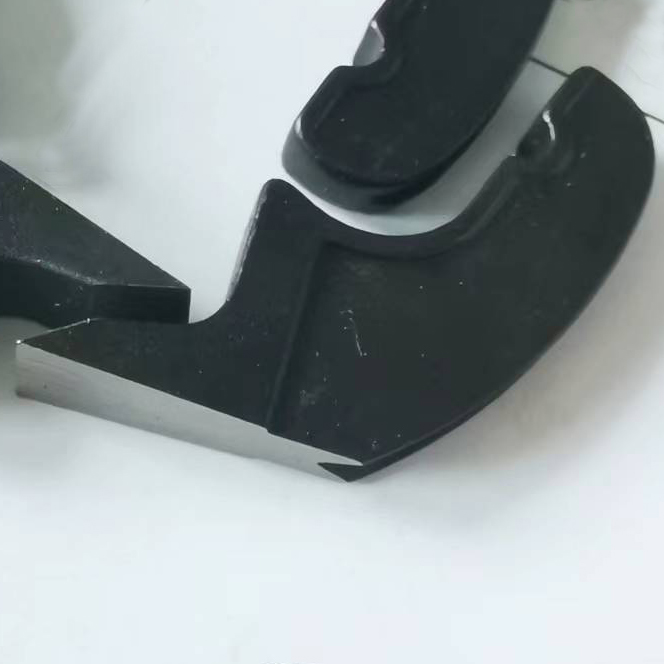Sawmill Teeth Inserts Guide
Welcome to our comprehensive guide on sawmill teeth inserts. In this article, we will delve into the world of sawmill teeth inserts, discussing their importance, types, maintenance, and the benefits they bring to the sawmill industry. Whether you’re a professional sawmill operator or a woodworking enthusiast, this guide will provide valuable insights into selecting, using, and maintaining sawmill teeth inserts for optimal performance.
1. Importance of Sawmill Teeth Inserts:
Sawmill teeth inserts play a crucial role in the efficiency and productivity of a sawmill. These small components are designed to fit into the saw blade, offering improved cutting performance and prolonging the lifespan of the blade. By selecting the right sawmill teeth inserts, operators can achieve cleaner cuts, reduce downtime, minimize waste, and ultimately boost profitability.
2. Types of Sawmill Teeth Inserts:
There are various types of sawmill teeth inserts available, each designed for specific cutting applications. Here are some commonly used types:
a. Carbide Inserts: Known for their durability and hardness, carbide inserts are ideal for cutting hardwoods and abrasive materials. They are resistant to wear and can withstand high temperatures, making them suitable for demanding sawmill operations.
b. High-Speed Steel (HSS) Inserts: HSS inserts offer excellent heat resistance and toughness. They are commonly used for cutting softwoods, non-ferrous metals, and plastics. HSS inserts are relatively more affordable compared to carbide inserts, making them a popular choice for many sawmill operators.
c. Stellite-Tipped Inserts: Stellite-tipped inserts are known for their exceptional wear resistance and ability to handle extreme cutting conditions. They are commonly used for cutting frozen logs, tropical hardwoods, and other challenging materials.
3. Selecting the Right Sawmill Teeth Inserts:
Choosing the right sawmill teeth inserts depends on several factors, including the type of material being cut, cutting conditions, and the desired outcome. Here are some key considerations:
a. Material Hardness: Determine the hardness of the material you frequently cut to select inserts with the appropriate hardness rating. Harder inserts are suitable for cutting harder materials, while softer ones are more suitable for softer materials.
b. Tooth Geometry: Different tooth geometries are designed for specific cutting tasks. Consider the type of cut (cross-cutting or ripping) and the desired finish to choose the right tooth geometry for your needs.
c. Insert Coatings: Some inserts come with specialized coatings to enhance performance, such as reducing friction and increasing heat resistance. Consider coatings like titanium nitride (TiN), titanium carbon nitride (TiCN), or aluminum titanium nitride (AlTiN) for improved longevity.
4. Maintenance and Replacement:
To maximize the lifespan and performance of sawmill teeth inserts, proper maintenance is essential. Here are some maintenance tips:
a. Regular Inspection: Inspect the inserts for any signs of wear, damage, or dullness. Replace worn or damaged inserts promptly to avoid compromising cutting performance.
b. Cleaning and Lubrication: Clean the inserts regularly, removing any debris or resin buildup that may affect the cutting efficiency. Apply lubricant to reduce friction and prevent overheating during operation.
c. Sharpening or Replacement: Depending on the type of inserts, they may be sharpened or replaced when worn beyond use. Consult the manufacturer’s guidelines for proper sharpening techniques or consider professional sharpening services.
5. Benefits of Sawmill Teeth Inserts:
Investing in high-quality sawmill teeth inserts offers numerous benefits, including:
a. Improved Cutting Efficiency: Well-maintained and sharp inserts ensure clean and precise cuts, reducing the need for rework.
b. Extended Blade Lifespan: Inserts protect the blade from direct contact with the work material, thus minimizing wear and extending the blade’s lifespan.
c. Cost Savings: By reducing downtime, minimizing waste, and extending blade life, sawmill teeth inserts contribute to cost savings and improved profitability.
Sawmill teeth inserts are vital components for achieving optimal performance in the sawmill industry. By understanding the importance of these inserts, selecting the right type, and maintaining them properly, operators can enhance cutting efficiency, prolong blade life, and ultimately improve overall productivity and profitability. Invest in high-quality sawmill teeth inserts and follow the recommended maintenance practices to reap the benefits they bring to your sawmill operations.

